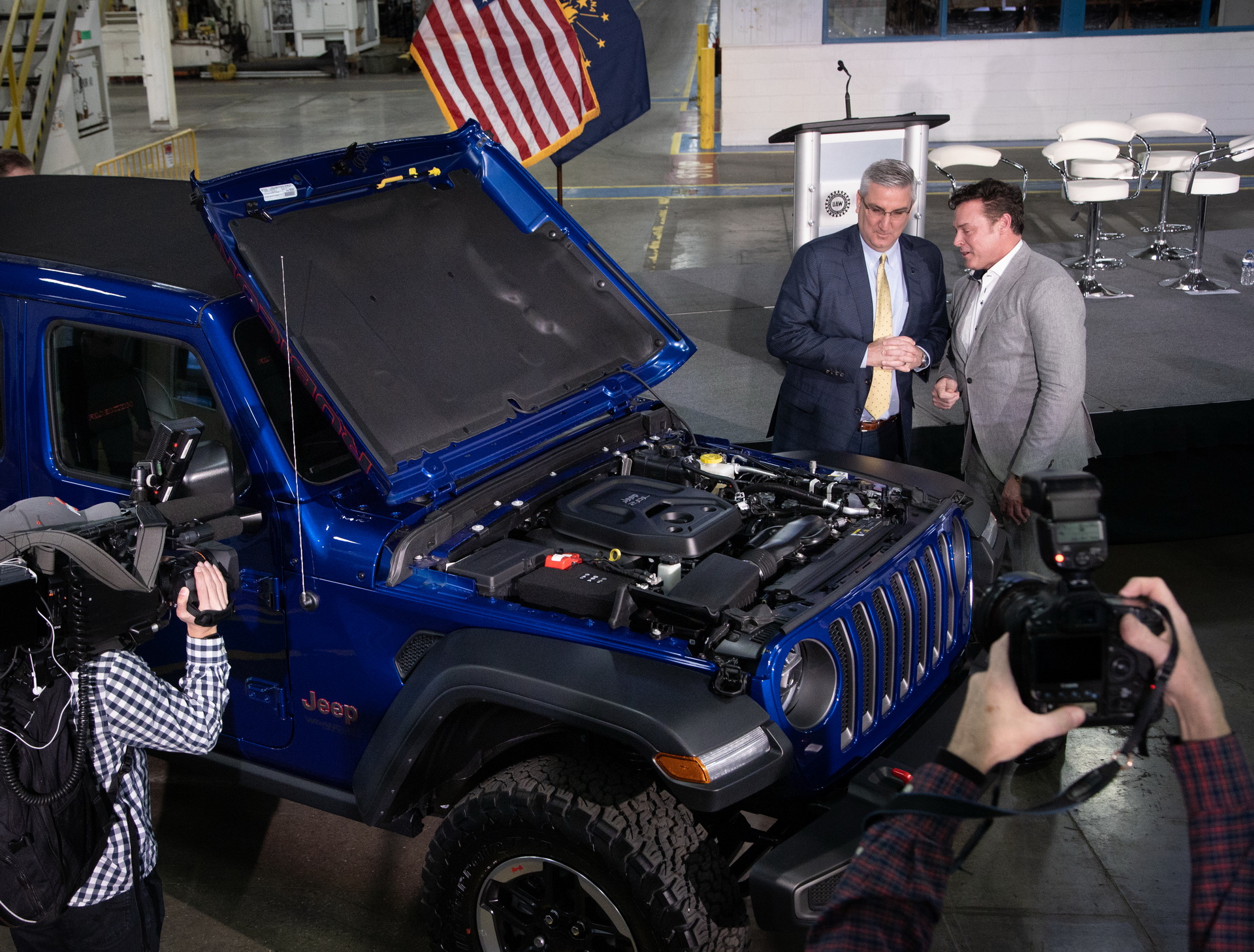According to FCA, the redesigned 2018 Jeep Wrangler boasts a Global Warming Potential (GWP) that’s 15 percent lower than that of its predecessor.
Furthermore, each new Wrangler Unlimited has the potential (over its lifetime) to account for emissions reduction that are equivalent to CO2 produced by burning 7.7 tons of coal. A key contributor in this strategy has been the Wrangler’s 2.0-liter turbocharged four-pot.
FCA calculated the Wrangler Unlimited’s GWP using industry-standard software that examines multiple factors associated with a vehicle’s design, production and performance, such as the environmental impact of fuel production and delivery, material use and the vehicle’s own fuel consumption.
Watch: New Jeep Wrangler Flipped Over In Latest Crash Tests, Not Once, But Twice
“This is the outcome we expect when we launch a new vehicle,” said FCA exec Mitch Clauw. “In all our processes, the mitigation of environmental impact is a baked-in consideration.”
In order to make their final determinations on the matter, FCA calculated 150,000 miles (240,000 km) of operations, measuring improvements by contrasting anticipated CO2-equivalent greenhouse gas (GHG) emissions, with those of comparable vehicles – in this case, the previous-generation Wrangler Unlimited, powered by its only available engine, a 3.6-liter Pentastar V6 mated to a five-speed automatic gearbox.
The current 270 HP 2.0-liter turbocharged L4 unit also comes with an engine stop-start system (ES), which means that each new Wrangler has the potential to account for a 14-metric ton reduction in GHG emissions, said the carmaker.
Then there’s the MPG factor, where FCA’s TorqueFlite eight-speed automatic gearbox helps the Wrangler Unlimited achieve a combined 21 mpg (11.2 l/100km) when mated to the 2.0-liter turbo, an increase of 3 mpg over the previous-gen model. Also, if you opt for the Sahara trim, you can get the 2020 Wrangler Unlimited with a 2.0-liter turbo L4 that features eTorque mild-hybrid tech for even greater efficiency.




